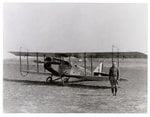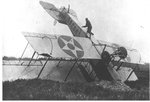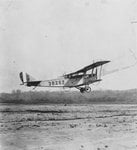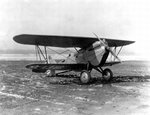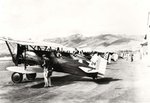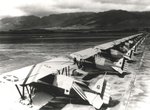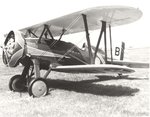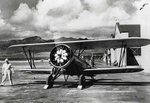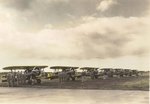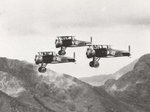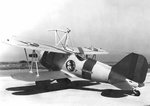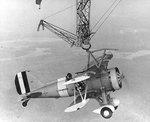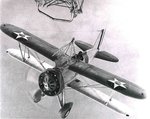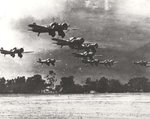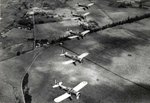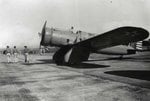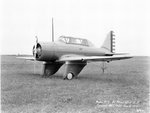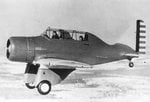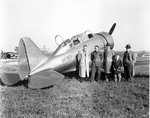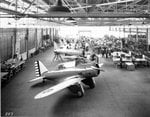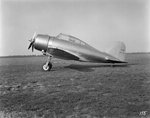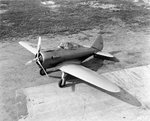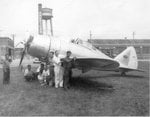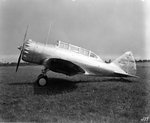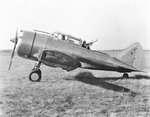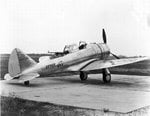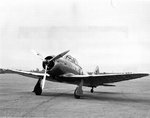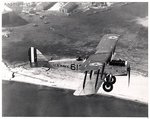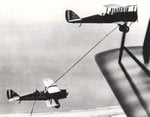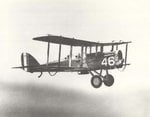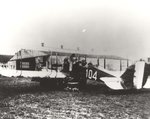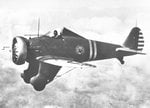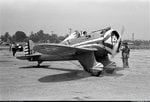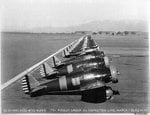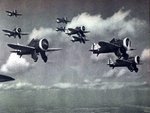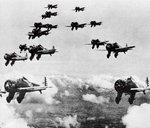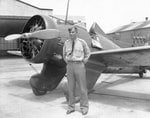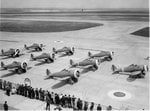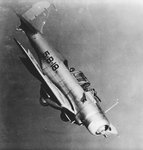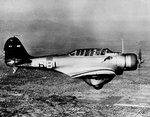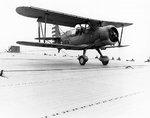he Air Service had a brief but turbulent history. Created during World War I by executive order, it gained permanent legislative authority in 1920 as a combatant arm of the line of the United States Army. There followed a six-year struggle between adherents of airpower and the supporters of the traditional military services about the value of an independent Air Force, intensified by struggles for funds caused by skimpy budgets, as much an impetus for independence as any other factor. The Lassiter Board, a group of General Staff officers, recommended in 1923 that the Air Service be augmented by an offensive force of bombardment and pursuit units under the command of Army general headquarters in time of war, and many of its recommendations became Army regulations. The War Department desired to implement the Lassiter Board's recommendations, but the administration of President Calvin Coolidge chose instead to economize by radically cutting military budgets, particularly the Army's. The Lampert Committee of the House of Representatives in December 1925 proposed a unified air force independent of the Army and Navy, plus a department of defense to coordinate the three armed services. However another board, headed by Dwight Morrow, was appointed in September 1925 by Coolidge ostensibly to study the "best means of developing and applying aircraft in national defense" but in actuality to minimize the political impact of the pending court-martial of Billy Mitchell (and to preempt the findings of the Lampert Committee). It declared that no threat of air attack was likely to exist to the United States, rejected the idea of a department of defense and a separate department of air, and recommended only minor reforms that included renaming the Air Service to allow it more prestige.
In early 1926 the Military Affairs Committee of the Congress rejected all bills set forth before it on both sides of the issue. They fashioned a compromise in which the findings of the Morrow Board were enacted as law, while providing the air arm a "five-year plan" for expansion and development. Maj. Gen. Mason Patrick, the Chief of Air Service, had proposed that it be made a semi-independent service within the War Department along the lines of the Marine Corps within the Navy Department, but this was rejected; only the cosmetic name change was accepted. The legislation changed the name of the Air Service to the Air Corps, "thereby strengthening the conception of military aviation as an offensive, striking arm rather than an auxiliary service."
The Air Corps Act (44 Stat. 780) became law on 2 July 1926. In accordance with the Morrow Board's recommendations, the act created an additional Assistant Secretary of War to "help foster military aeronautics", and established an air section in each division of the General Staff for a period of three years. Two additional brigadier generals would serve as assistant chiefs of the Air Corps. Previous provisions of the National Defense Act of 1920 that all flying units be commanded only by rated personnel and that flight pay be awarded were continued. The Air Corps also retained the "Prop and Wings" as its branch insignia through its disestablishment in 1947. Patrick became Chief of the Air Corps and Brig. Gen. James E. Fechet continued as his first assistant chief. On 17 July 1926, two lieutenant colonels were promoted to brigadier general for four-year terms as assistant chiefs of Air Corps: Frank P. Lahm, to command the new Air Corps Training Center, and William E. Gillmore, in command of the Materiel Division. The position of the air arm within the Department of War remained essentially the same as before, that is, the flying units were under the operational control of the various ground forces corps area commands and not the Air Corps, which remained responsible only for procurement of aircraft, maintenance of bases, supply, and training. Because of a lack of legally specified duties and responsibilities, the new position of Assistant Secretary of War for Air, held by F. Trubee Davison from July 1926 to March 1933, proved of little help in promoting autonomy for the air arm.
The Air Corps Act gave authorization to carry out a five-year expansion program. However, the lack of funding caused the beginning of the five-year expansion program to be delayed until 1 July 1927. Gen. Patrick proposed an increase to 63 tactical squadrons (from an existing 32) to maintain the program of the Lassiter Board already in effect, but Chief of Staff Gen. John Hines rejected the recommendation in favor of a plan drawn up by ground force Brig. Gen. Hugh Drum that proposed 52 squadrons. The act authorized expansion to 1,800 airplanes, 1,650 officers, and 15,000 enlisted men, to be reached in regular increments over a five-year period. None of the goals were reached by the end of five years, and neither of the modest increases in airplanes or officers was reached until 1938, because adequate funds were never appropriated in the budget, and the coming of the Great Depression forced reductions in pay and modernization across the board in the Army. Organizationally the Air Corps doubled from seven to fifteen groups, but all were seriously understrength in aircraft and pilots. As units of the Air Corps increased in number, so did higher command echelons. The 2nd Wing, activated in 1922 as part of the Air Service, remained the only wing organization in the new Air Corps until 1929, when it was redesignated the 2nd Bombardment Wing in anticipation of the activation of the 1st Bombardment Wing to provide a bombardment wing on each coast. The 1st Bomb Wing was activated in 1931, followed by the 3rd Attack Wing in 1932 to protect the Mexican border, at which time the 1st became the 1st Pursuit Wing. The three wings became the foundation of General Headquarters Air Force upon its activation in 1935.
In early 1926 the Military Affairs Committee of the Congress rejected all bills set forth before it on both sides of the issue. They fashioned a compromise in which the findings of the Morrow Board were enacted as law, while providing the air arm a "five-year plan" for expansion and development. Maj. Gen. Mason Patrick, the Chief of Air Service, had proposed that it be made a semi-independent service within the War Department along the lines of the Marine Corps within the Navy Department, but this was rejected; only the cosmetic name change was accepted. The legislation changed the name of the Air Service to the Air Corps, "thereby strengthening the conception of military aviation as an offensive, striking arm rather than an auxiliary service."
The Air Corps Act (44 Stat. 780) became law on 2 July 1926. In accordance with the Morrow Board's recommendations, the act created an additional Assistant Secretary of War to "help foster military aeronautics", and established an air section in each division of the General Staff for a period of three years. Two additional brigadier generals would serve as assistant chiefs of the Air Corps. Previous provisions of the National Defense Act of 1920 that all flying units be commanded only by rated personnel and that flight pay be awarded were continued. The Air Corps also retained the "Prop and Wings" as its branch insignia through its disestablishment in 1947. Patrick became Chief of the Air Corps and Brig. Gen. James E. Fechet continued as his first assistant chief. On 17 July 1926, two lieutenant colonels were promoted to brigadier general for four-year terms as assistant chiefs of Air Corps: Frank P. Lahm, to command the new Air Corps Training Center, and William E. Gillmore, in command of the Materiel Division. The position of the air arm within the Department of War remained essentially the same as before, that is, the flying units were under the operational control of the various ground forces corps area commands and not the Air Corps, which remained responsible only for procurement of aircraft, maintenance of bases, supply, and training. Because of a lack of legally specified duties and responsibilities, the new position of Assistant Secretary of War for Air, held by F. Trubee Davison from July 1926 to March 1933, proved of little help in promoting autonomy for the air arm.
The Air Corps Act gave authorization to carry out a five-year expansion program. However, the lack of funding caused the beginning of the five-year expansion program to be delayed until 1 July 1927. Gen. Patrick proposed an increase to 63 tactical squadrons (from an existing 32) to maintain the program of the Lassiter Board already in effect, but Chief of Staff Gen. John Hines rejected the recommendation in favor of a plan drawn up by ground force Brig. Gen. Hugh Drum that proposed 52 squadrons. The act authorized expansion to 1,800 airplanes, 1,650 officers, and 15,000 enlisted men, to be reached in regular increments over a five-year period. None of the goals were reached by the end of five years, and neither of the modest increases in airplanes or officers was reached until 1938, because adequate funds were never appropriated in the budget, and the coming of the Great Depression forced reductions in pay and modernization across the board in the Army. Organizationally the Air Corps doubled from seven to fifteen groups, but all were seriously understrength in aircraft and pilots. As units of the Air Corps increased in number, so did higher command echelons. The 2nd Wing, activated in 1922 as part of the Air Service, remained the only wing organization in the new Air Corps until 1929, when it was redesignated the 2nd Bombardment Wing in anticipation of the activation of the 1st Bombardment Wing to provide a bombardment wing on each coast. The 1st Bomb Wing was activated in 1931, followed by the 3rd Attack Wing in 1932 to protect the Mexican border, at which time the 1st became the 1st Pursuit Wing. The three wings became the foundation of General Headquarters Air Force upon its activation in 1935.











